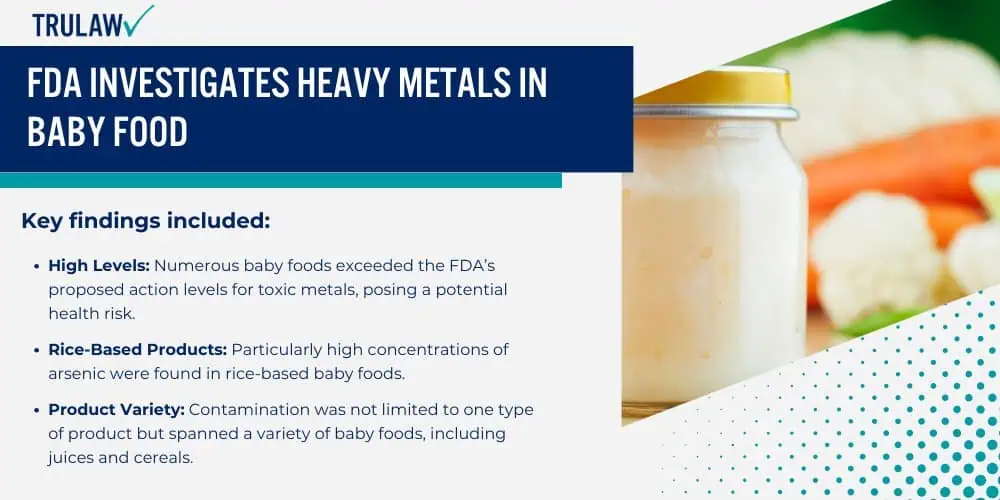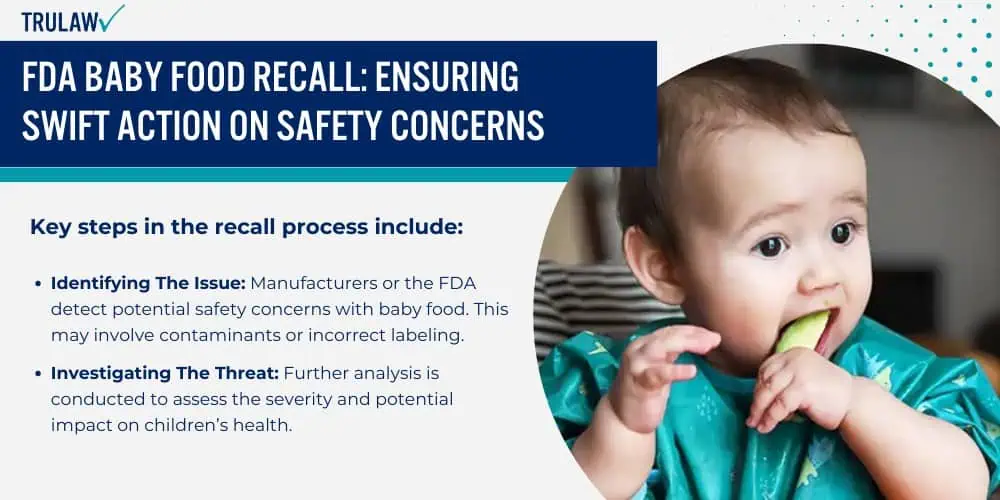Quality control procedures also involve rigorous checks during the production, packaging, and distribution stages.

This multi-faceted approach ensures manufacturers maintain high food safety standards for baby products.
To review FDA regulations and their impact on baby food more, visit the detailed study on regulatory biokinetics in baby food.
These regulations play a pivotal role in safeguarding infants from potential dietary risks, ensuring their growth and development are not compromised by any harmful substances in their food.
The FDA has investigated heavy metals in baby food, focusing on reducing exposure to toxic elements and ensuring safety in manufactured products.
These investigations have led to significant findings and prompted actions to protect children’s health.
Key Findings from FDA’s Investigation into Heavy Metals
The FDA’s investigation revealed several critical issues concerning heavy metal contamination in baby foods.
Testing showed that many products contained levels of toxic metals such as lead, arsenic, cadmium, and mercury above acceptable limits.
Key findings included:
- High Levels: Numerous baby foods exceeded the FDA’s proposed action levels for toxic metals, posing a potential health risk.
- Rice-Based Products: Particularly high concentrations of arsenic were found in rice-based baby foods.
- Product Variety: Contamination was not limited to one type of product but spanned a variety of baby foods, including juices and cereals.
- Dietary Exposure: The chronic ingestion of these metals can lead to severe developmental and health issues in children.
These findings emphasize the critical need for stringent regulatory measures to minimize dietary exposure to chemical hazards in baby food.
Actions Taken by FDA in Response to Investigation Results
Following the investigation, the FDA took decisive steps to mitigate the risks associated with heavy metal contamination in baby food.
The focus was on both immediate actions and long-term strategies to safeguard children’s health.
Actions include:
- Draft Guidance Issuance: The FDA released draft guidance outlining acceptable levels of toxic elements in baby foods.
- Proposed Action Levels: Establishing FDA’s proposed action levels for heavy metals to enforce stricter limits on contamination.
- Preventive Controls: Requiring manufacturers to implement preventive controls to reduce contamination during production.
- Ongoing Monitoring: Increased monitoring and testing to ensure compliance with FDA’s regulations.
- Public Awareness: Informing caregivers about the risks associated with certain baby foods and promoting safer dietary choices.









